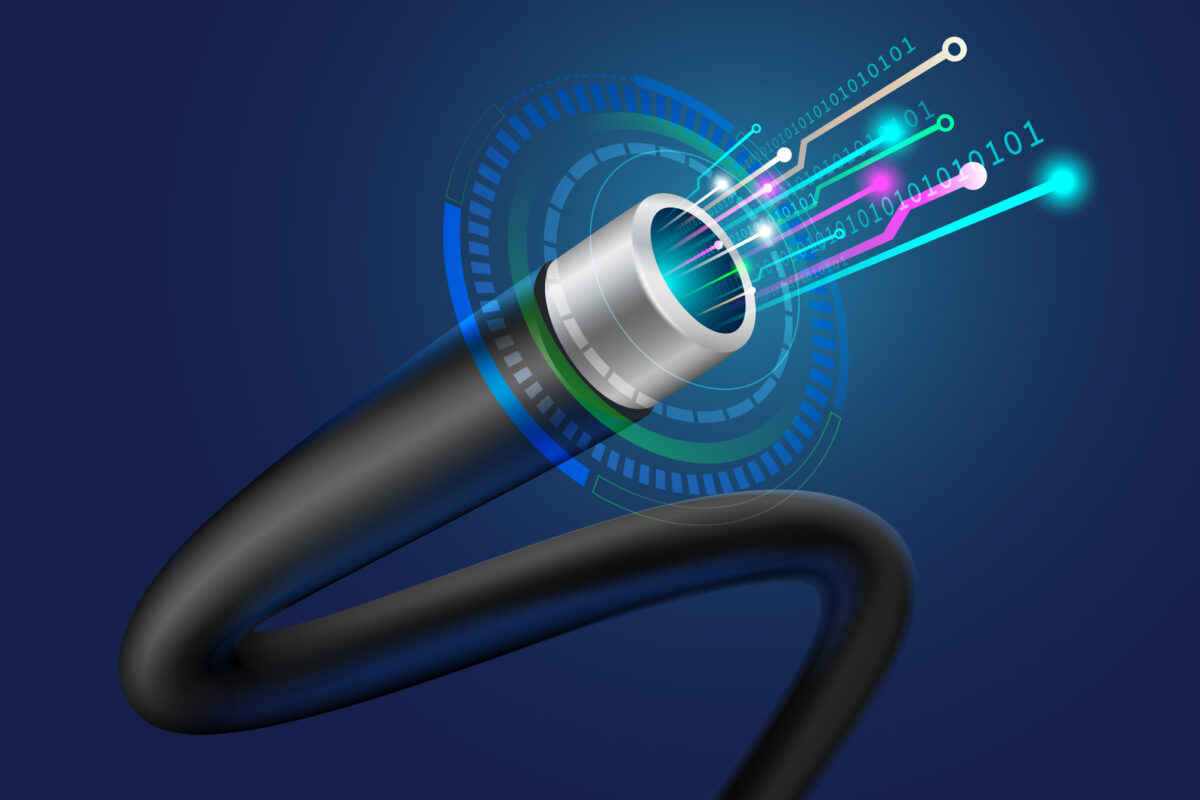In our digital era, the quest for rapid, reliable connectivity is relentless. Here’s where the unsung hero of modern communication comes in: fiber optic cables. Fiber optics form the lifelines that crisscross beneath our cities and oceans, keeping us connected. This guide is for anyone interested in the potential of fiber optic technology, from tech enthusiasts and IT professionals to network engineers and small businesses looking to stay ahead of the curve.
How do Fiber Optic Cables Work?
Fiber optic cables represent a leap from their copper wire predecessors. But what exactly makes these slender strands of glass so special?
Light Transmission and Signal Conversion
Fiber optic cables transmit data astonishingly fast – using light. Light pulses travel through the wires, each pulse representing digital data. These optical fibers are layered with pure glass, facilitating uninterrupted light transmission over significant distances. Signal conversion devices at either end of the cable translate electronic signals into light and back again, enabling the high-speed exchange of information.
The intricate science behind fiber optics governs their efficient operation. Understanding the principles of internal reflection allows you to peer into how light is guided down the fibers, opening up the world of faster internet speeds and enhanced network connectivity.
Benefits of Fiber Optic Cables
Faster Data Transmission Speeds
Unlike traditional cabling, fiber optics offer incomparably swift data transfer rates, allowing wifi service providers to deliver blazing-fast wifi connections.
Greater Bandwidth Capacity
Bandwidth is akin to a highway’s width; the wider it is, the more cars can travel simultaneously. Similarly, fiber optic cables provide a broad spectral road, enabling a robust flow of data that can accommodate many simultaneous users – a boon for the internet for small businesses.
Immunity to Electromagnetic Interference
A key feature of fiber optic cables is their resistance to electromagnetic interference. This ensures that your data arrives without the distortions that can afflict copper cables running alongside power lines or industrial machinery.
Longer Distance Capabilities
Fiber optic technology maintains signal strength over longer distances than copper cables, making it ideal for sprawling data centers and vast telecommunication networks.
Types of Fiber Optic Cables
Single-mode vs. Multi-mode
The core difference lies in the way light travels within the cable. Single-mode fibers are designed for long distances with a narrow core, allowing light to travel in a straight line. Multi-mode fibers, on the other hand, have a wider core and are optimized for shorter distances but with higher data volume transmission.
Different Connector Types
Various connectors cater to specific applications and installation environments, ensuring your network’s architecture fulfills your requirements perfectly.
Applications of Fiber Optic Cables
From providing backbone infrastructure for telecommunications to ensuring crisp HDTV signals, the versatility of fiber optic cables spans a spectrum of industries.
Telecommunications
Fiber is indispensable in telecom networks, carrying vast amounts of voice and data over immense distances with minimal loss.
Internet Connectivity
Fiber optics’ high-capacity channels are ideal for delivering internet services, particularly for businesses requiring robust and reliable internet connectivity.
Data Centers
Inside data centers, these cables effortlessly handle colossal data payloads, making them the conduit of choice for high-volume information processing and storage facilities.
Broadcast and Cable TV
The superior signal quality and bandwidth of fiber optic cables have revolutionized media delivery in the broadcast and cable TV sectors.
Installation and Maintenance
Proper fiber optic installation and maintenance are crucial for system longevity and performance. From the right handling during installation to the regularity of routine checks and prompt response to issues, each step is pivotal to a future-proof network.
The advantages of fiber optic technology cannot be overstated. In an ever-more-connected world, the demand for higher speeds, greater bandwidth, and reliable connections will only rise. These gossamer threads, crammed with light, stand ready to transmit our texts, calls, and streams at velocities once thought impossible.
For small businesses, tech aficionados, or forward-thinkers, staying abreast of fiber optic technology is not just about partaking in the conversation – it’s about leading it.
Best practices for maintenance include regular cleaning of connectors and inspection of the physical infrastructure. With fiber optic cables now more accessible than ever, their maintenance isn’t arcane but does require some specialized knowledge. If you’re looking for a fiber optic cable installation and maintenance specialist, consider celito – your local business fiber internet expert. Check your area’s Fiber Internet availability here, and contact us by calling (919) 852-1238.

